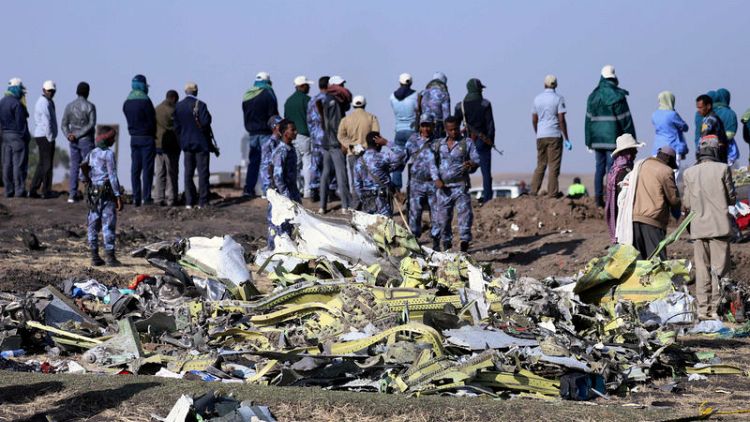GARA-BOKKA, Ethiopia (Reuters) - The first thing Reuters photographer Tiksa Negeri saw was a small group of figures gathered in a circle on the horizon near the village of Gara-Bokka in central Ethiopia.
As he drove closer, the full scene emerged - people standing staring at the wreckage of Ethiopian Airlines Flight 302 spread out over a wheat field, just hours after it had come down.
“I never thought it would be this bad. Villagers were crying. It was very emotional, very tough,” said the 30-year-old, who grew up in a small town just the other side of the capital Addis Ababa.
Some might assume that a press photographer’s job in such a situation is to get in close and grab the most dramatic pictures, no matter how graphic.
Tiksa pulled back. "We didn't want to show anything that families might recognise or that was too graphic or distressing to look at."
His first photos gave a broad view of the crash site. The close-ups were carefully framed - a crumpled boarding pass, a battered laminated safety card.
Tiksa had been having a weekend off at a nearby holiday spot when the plane came down on Sunday March 10, and he stayed on all week, camping out at a hotel.
It was an international story involving victims from 35 countries that is continuing to have a seismic effect on the world's aviation industry and its biggest planemaker, Boeing.
But the most immediate effect was on the people at the scene.
“Later in the week, families of the passengers were brought to the crash site. It was heart-breaking. People would be screaming their loved one's names, crying over their pictures. One woman threw the charred soil in her face when she realised she might have no body to bury,“ Tiksa said.
Again he held back as they arrived. “I tried to maintain their privacy in a moment of very intense grief so I didn't want to get too close to them.
“Because I speak Amharic, I could understand what they were screaming. I cried. In this kind of situation, it's better if you can't understand what they are saying."
(Writing by Katharine Houreld; Editing by Andrew Heavens)
